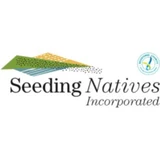

Seeding Native Grassland RestorationValidated by Everclime
Sustainable Development Goals (SDG)
Aims to protect, restore and promote sustainable use of terrestrial ecosystems, manage forests, combat desertification, and halt biodiversity loss.
Learn moreImpact Feed

Sport NXT Impact Card
06 Jun 2025
What is the SportNXT Impact Card?
The SportNXT Impact Card represents a direct contribution to environmental restoration.
In 2025, SportNXT Seeded 1sqm of grassland per attendee, helping to restore native grasslands in South Australia.
What is SportNXT?
SportNXT is a global sports leadership summit held annually in Melbourne, bringing together industry executives, innovators, and decision-makers to discuss the future of sports.
In 2025, SportNXT Seeded 1sqm of grassland per attendee, helping to restore native grasslands in South Australia.
What is SportNXT?
SportNXT is a global sports leadership summit held annually in Melbourne, bringing together industry executives, innovators, and decision-makers to discuss the future of sports.


Impact You Can See and Support
08 Apr 2025
Impact You Can See and Support
In partnership with Everclime, Seeding Natives invites supporters to actively engage in the Decade on Ecosystem Restoration. Whether through direct sponsorship, carbon offset contributions, or community participation, each action contributes to measurable ecological outcomes. Using the Everclime platform, impact supporters can follow real-time project updates, explore restoration impact cards, and see how their involvement is helping reverse the loss of biodiversity. This is ecological restoration with transparency, accountability, and purpose, creating a legacy of thriving landscapes and sustainable futures.


Impact Project Chosen
19 Feb 2025
SportNXT Chooses Seeding Natives
SportNXT has chosen its 2025 impact project as Seeding Native.
Seeding Natives specialise in diverse native grassland/grassy woodland restoration, reconstruction and rehabilitation.
Seeding Natives specialise in diverse native grassland/grassy woodland restoration, reconstruction and rehabilitation.


Greta Hayes Makes Every Minute Count!
11 Feb 2025
NSW Pride vs Adelaide Fire
During the NSW Pride vs Adelaide Fire match on 16th November 2024, Australian hockey star Greta Hayes wasn’t just playing to win, she was playing to make an impact. For every minute she played, Greta supported the planting of 1 square meter of native grassland through the Seeding Natives initiative.
This effort, powered by Everclime and Hockey Australia’s Sustainability-as-a-Service partnership, shows how athletes like Greta are leading the way in environmental responsibility and biodiversity restoration. Fans can track the growth of these efforts through a digital Impact Card, turning passion for the game into real action.
Thank you, Greta, for being a role model for sustainable sports! Together, we’re creating a legacy that extends far beyond the field.
This effort, powered by Everclime and Hockey Australia’s Sustainability-as-a-Service partnership, shows how athletes like Greta are leading the way in environmental responsibility and biodiversity restoration. Fans can track the growth of these efforts through a digital Impact Card, turning passion for the game into real action.
Thank you, Greta, for being a role model for sustainable sports! Together, we’re creating a legacy that extends far beyond the field.

A Comprehensive Approach
31 Jan 2025
Our Core Activities
The organization’s comprehensive approach includes:
• Site Preparation: Assessing and preparing the soil to establish a solid foundation for diverse ecosystems.
• Seeding Activities: Utilizing purpose-engineered machinery for direct seeding of native grasslands and grassy woodlands.
• Ongoing Management: Providing continuous management to ensure the restored land progresses toward the desired ecosystem.
• Site Preparation: Assessing and preparing the soil to establish a solid foundation for diverse ecosystems.
• Seeding Activities: Utilizing purpose-engineered machinery for direct seeding of native grasslands and grassy woodlands.
• Ongoing Management: Providing continuous management to ensure the restored land progresses toward the desired ecosystem.


Introducing Seeding Natives
31 Jan 2025
Seeding Natives
Seeding Natives is a not-for-profit environmental charity dedicated to the ecological restoration of native grasslands and associated ecosystems in South Australia. Since 2012, the organization has focused on rebuilding biodiverse habitats from the ground up, emphasizing the importance of the ground layer in creating functioning ecosystems.
In less than two centuries, South Australia has experienced a significant decline in its native vegetation, with 99% of native grasslands and 90% of grassy woodlands lost. This drastic reduction has led to numerous species becoming extinct or threatened. Seeding Natives aims to reverse this trend by restoring at least 30% of the lost habitats, thereby safeguarding biodiversity and preventing further species loss.
In less than two centuries, South Australia has experienced a significant decline in its native vegetation, with 99% of native grasslands and 90% of grassy woodlands lost. This drastic reduction has led to numerous species becoming extinct or threatened. Seeding Natives aims to reverse this trend by restoring at least 30% of the lost habitats, thereby safeguarding biodiversity and preventing further species loss.
